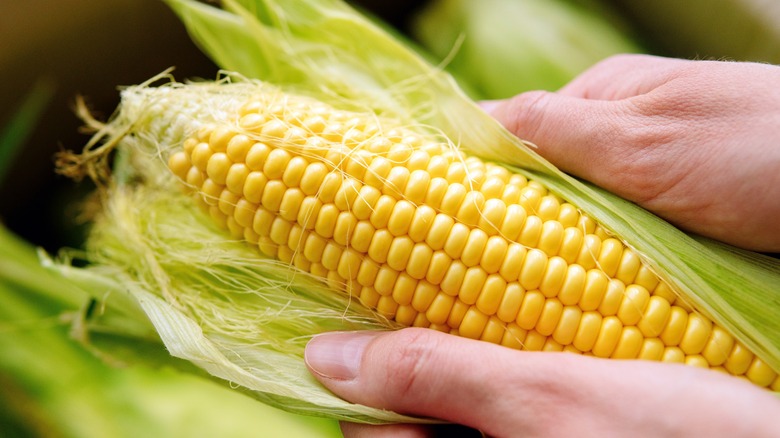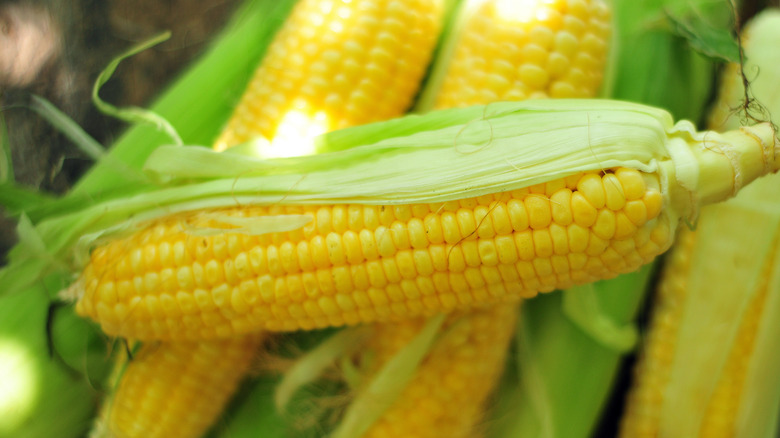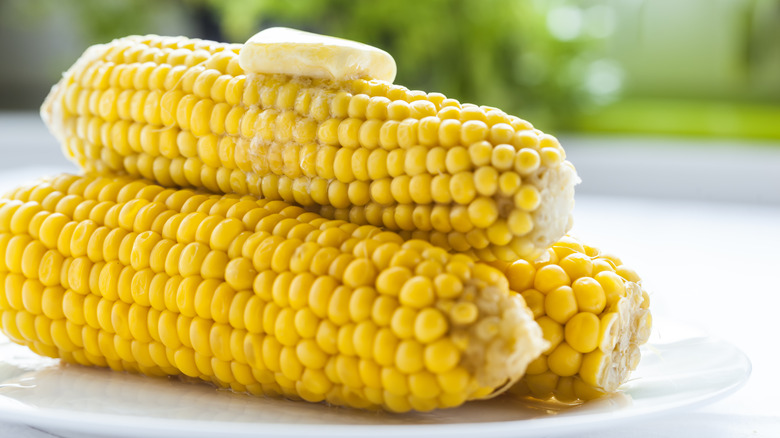The Best Way To Thaw Frozen Corn On The Cob
Freezing is a great way to keep food fresh for much longer. (And in some cases, such as salmon, frozen is often a better product than fresh.) But some foods freeze better than others. And one of the ones that freezes best is corn. In contrast to a lot of other vegetables, you can keep corn in the freezer for up to eight months and it'll still be good. But what's the best method for getting it into and out of the freezer? To thaw frozen corn, all you'll need to do is run it under cold water.
Not only is corn still good in the freezer if it's been cooked, but that's actually a good way to freeze it. The first step is boiling, a standard part of the cooking process for corn. (You don't even need to shuck it first if you don't want to — although you still want to boil it in either case.) Then, carefully dry it off and put it in a sealed package (such as Ziploc) and pop it in the freezer.
Thawing corn on the cob is super easy
With corn, thawing is even simpler than freezing. When you're dealing with a more finicky, high water-content frozen food, such as sauerkraut, you want to thaw as slowly as possible, letting it thaw itself naturally in a cold environment (e.g. the fridge). Corn, though, doesn't have that issue. You can just run the package under some cold tap water, or (to save water) put it in a bowl and let it float there. It will be good to go in minutes.
How long it stays good for depends on what you do at that point. In a diametric opposite situation to ground beef (which doesn't last as long as a whole cut of protein), corn that's been removed from the cob will stay fresh for literally twice as long as than corn that's still on there. A whole cob will last you for one to two days, but corn that's been shorn will last for three or four.
Corn freezes well because of its water content
Why do some vegetables, including corn, freeze well, while others, such as cabbage, cucumbers, and celery, are an absolute disaster? It's simple: water content. When food is frozen, ice crystals form and expand from the water inherent in the product. These crystals have the potential to burst through cell walls and ruin a food's taste and texture, which is why you want the food to form smaller crystals instead of larger ones. This is why a faster cooling rate is better; larger crystals don't have as much time to form.
Foods with a higher water content, though, can't help but form larger crystals, because there's just so much water in them. This causes the cell walls to blast apart, which particularly affects texture (this is why hard cheeses freeze well but soft cheeses don't). Corn's advantage here is that it's a firmer vegetable without a huge water content like lettuce (which is basically mostly water).


